Citatio: Thesaurus Linguarum Hethaeorum digitalis, hethiter.net/: TLHdig – Beta Version (2023-07-26)
Documentation
Marking elements beyond the cuneiform text
| Description | Symbol | Examples | Note |
| Part of tablet | % | %obv. %col. II %lo. e. | always on its own line |
| Line number | # | 1 # 1' # | always at the beginning of its own line |
| Paragraph ruling | § | add at the end of the line, then press Return | |
| Double paragraph ruling | §§ | add at the end of the line, then press Return | |
| Comment on the text | {G: … } | {G: end of column} {G: text breaks} {G: uninscribed space} | |
| Footnote to text | {F: … } | {F: Cuneiform sign incomplete; the scribe forgot to add the horizontal wedges} | use footnotes only if absolutely necessary |
| Division for table columns | \ | LÚ \ an-tu-uḫ-ša-aš | use for lexical texts |
Marking basic elements of the cuneiform text
| Description | Symbol | Input example | Rendered text | Note |
| Cuneiform sign indexing | pé-ra-an du-uk-ka4-ri | pé-ra-an du-uk-ka₄-ri | generally follow HZL transliteration standards; do not use ya, use ia | |
| Phonograms in text language | lowercase letters | an-da-an | an-da-an | connected by hyphens as appropriate, words separated by space |
| Sumerograms | uppercase letters | É.GAL | É.GAL | connected by full stops as appropriate, words separated by space |
| Akkadograms | uppercase letters preceded by underscore or hyphen | _A-NA É-ŠU | A-NA É-ŠU | undersorce only necessary if Akkadographic sign is preceded by space, not hyphen |
| Determinatives | uppercase letters surrounded by ° | °GIŠ°BANŠUR DINGIR°MEŠ° °LÚ.MEŠ°SANGA | GIŠBANŠUR DINGIRMEŠ LÚ.MEŠSANGA | connected by full stops as appropriate |
| Numbers | 6 NINDA°ḪI.A° MU 3°KAM° 1/2 _UP-NI | 6 NINDAḪI.A MU 3KAM ½ UP-NI | use only Arabic, never Roman numbers | |
| Uninterpretable cuneiform sign | {S:...} | {S:AN} | AN | |
| Unreadable, usually damaged cuneiform sign | x | x | x | no brackets required |
| Damage | [ ] ⸢ ⸣ ⸢ = U+2E22 ⸣ = U+2E23 | ⸢nu-uš⸣-ma-aš ⸢nu⸣-uš-ma-aš nu-u[š-m]a-aš nu-[uš-ma]-aš | ⸢nu-uš⸣-ma-aš ⸢nu⸣-uš-ma-aš nu-u[š-m]a-aš nu-[uš-ma]-aš | not ⸢nu-uš-⸣ma-aš or ⸢nu⸣-⸢uš⸣-maš not ⸢n⸣u-uš-ma-aš or [nu⸣-uš-ma-aš not nu-u[š-m⸣a-aš not nu[-uš-ma-]aš |
| Error: omission | < > | <an>-da-an | 〈an〉-da-an | |
| Error: addition | << >> | an-da-an <<an>> | an-da-an 〈〈an〉〉 | |
| Uncertainty and editorial corrections (basic) | ? ! !? | an-da?-an an!-da-an °URU°!?ša-mu-ḫa | an-da?-an an!-da-an URU!?ša-mu-ḫa | add directly after sign in question without space; determinatives: add after closing determinative marker |
| Uncertainty and editorial corrections (extended) | (?) sic | ⸢an-da-an(?)⸣ ansic-da-an | ⸢an-da-an(?)⸣ ansic-da-an | (?) should be used for marking uncertainties extending beyond the immediately preceding sign. sic should be used if the reading follows the tablet against the rendering in the autograph. |
| Erasure | erased area surrounded by * | * * *x x x* *an-da-an* | * * *x x x* *an-da-an* |
Marking elements of the cuneiform text: special cases
| Description | Symbol | Input example | Rendered text | Note |
| Word-internal Sumerogram | -- | °m°mur-ši--DINGIR-LIM | mmur-ši-DINGIR-LIM | |
| Determinative for personal names | °f°, °m° | °m°ḫu-uz-zi-ia | mḫu-uz-zi-ia | not °m°Ḫu-uz-zi-ia |
| String of several determinatives | each element surrounded by ° | °m°°.°°D°10-pí-ḫa-nu-uš | m.D10-pí-ḫa-nu-uš | |
| Mater lectionis | lowercase letters surrounded by ° | kar-°di°dim-mi-ia-az °MUNUS.MEŠ°kat°at°-re-eš | kar-didim-mi-ia-az MUNUS.MEŠkatat-re-eš | |
| Sign with inscription | x | KAxU | KA×U | |
| Sign with subscription | | = U+007C | a-wa|a-ia | a-waa-ia | |
| Glossenkeil (single) | ; | ;ma-a-li-i | 𒀹ma-a-li-i | |
| Glossenkeil (double) | : | ;ma-a-li-i | 𒑱ma-a-li-i | |
| Cross mark | >< | >< >< | 𒉽 𒉽 | |
| Glossenkeil and vertical wedge used as line or paragraph markers or word separators | ; : | = U+007C (each with a space before and after) | ; : | | 𒀹 𒑱 | |
Marking the language of a text passage or word
The main language of the text is chosen in the submission pipeline. If your text is written only in one language, no further action is necessary.
If you want to mark specific words with a language different from the main language of the text add one of the following language markers before the word in question:
- @a (Akkadian)
- @s (Sumerian)
- @l (Luwian)
- @p (Palaic)
- @hu (Hurrian)
- @ha (Hattic)
- @h (Hittite)
For example:
ḫur-li-li-ma @hu ki-lu-um me-ma-i (rendered as: ḫur-li-li-ma ki-lu-um me-ma-i)
If you want to mark sections (lines or several lines) with a language different from the main language of the text add one of the following language markers before the line(s) in question:
- @Akk (Akkadian)
- @Sum (Sumerian)
- @Luw (Luwian)
- @Pal (Palaic)
- @Hur (Hurrian)
- @Hat (Hattic)
- @Hit (Hittite)
- @Ign (unknown language)
If you are adding lexical texts, remember that you have to mark the language in your table columns, e.g.:
1 # {S:ḪU} \ @s MUŠEN \ @a iṣ-ṣu-rum \ @h šu-wa-iš

